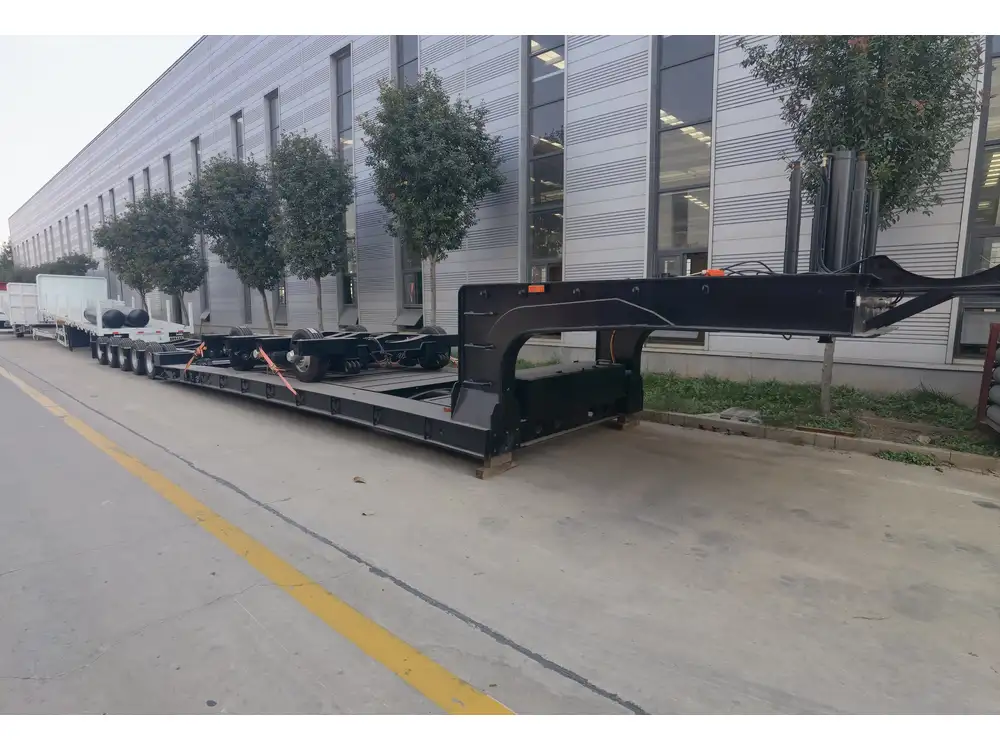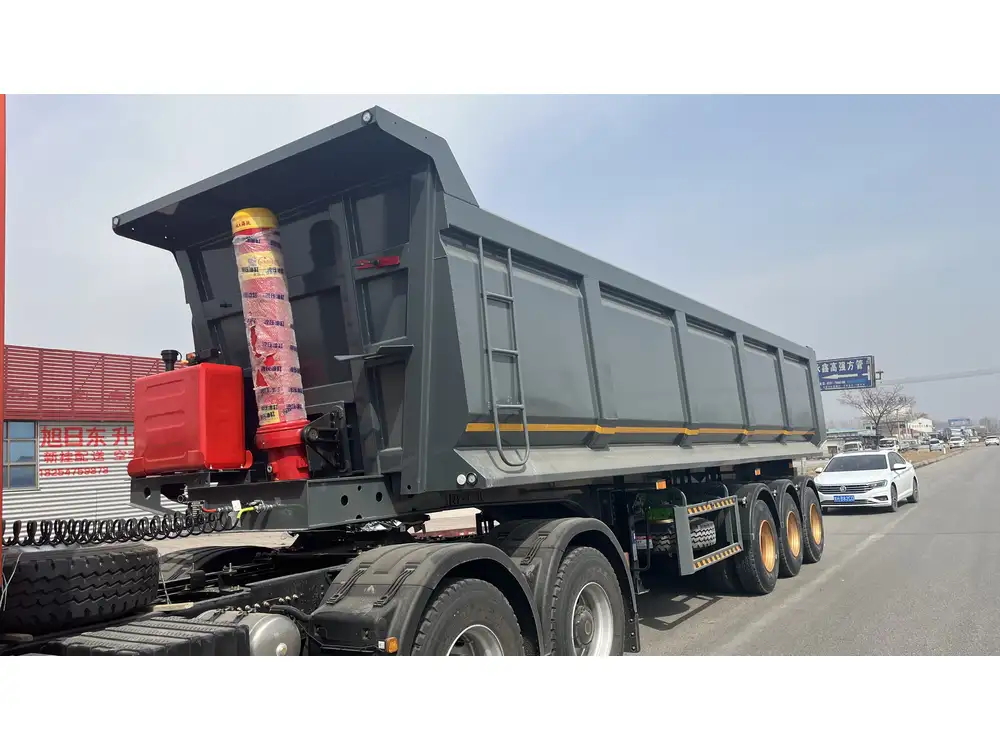Dump trailers are integral for various industries, from construction to landscaping and beyond. However, a malfunctioning lock can not only impede functionality but also compromise security. In this detailed guide, we will explore the common issues surrounding dump trailer locks, practical solutions for fixing them, and preventative maintenance tips to enhance durability. Whether you’re facing a stubborn lock or a complete failure, we’ve got you covered.
Understanding Common Dump Trailer Lock Issues
1. Types of Dump Trailer Locks
Before diving into repairs, it’s essential to understand the types of locks commonly used in dump trailers:
| Type of Lock | Description | Pros | Cons |
|---|---|---|---|
| Latch Lock | Simple mechanism activated by a lever. | Easy to operate; inexpensive. | Can be easily tampered with. |
| Padlock | Lock secured with a padlock, sometimes has shrouded design for extra security. | Versatile; can be replaced easily. | Loss can lead to a security breach. |
| Cam Lock | Utilizes a rotating cam mechanism. | Secure and reliable. | Can become stuck if not maintained. |
| Deadbolt Lock | Offers high security with complex mechanisms | Secure; difficult to pick. | More expensive and complicated to repair. |

2. Symptoms of Lock Problems
Identifying symptoms early can prevent larger issues. Here’s what to look for:
- Difficulty Turning the Key: If the key is hard to turn or does not turn at all, it may indicate internal damage.
- Lock Jamming: A lock that is stuck or will not move can signify foreign debris or rust.
- Broken or Damaged Parts: Visible fractures or misaligned components can lead to complete lock failure.
Tools and Materials Needed for Repairs
Essential Tools
Being equipped with the right tools is critical for effective repair. Here’s a list of tools we recommend:
- Screwdrivers (Flathead and Phillips)
- Pliers: Needle-nose for precision and standard for grip.
- Lubricant: Graphite powder or penetrating oil such as WD-40.
- Replacement Parts: Depending on the lock type, additional screws or lock mechanisms may be necessary.
- Cleaning Supplies: Wire brush, cloth, or compressed air for clearing debris.

Safety Equipment
Ensure your safety with appropriate gear:
- Gloves
- Safety glasses
- Work apron (to hold tools)
Step-by-Step Guide to Fixing Dump Trailer Locks
Step 1: Assess the Lock
Begin by examining the lock to determine the issue. Note any visible damage, rust, or foreign debris that could be obstructing normal function.

Step 2: Clean the Lock
Tools Required:
- Wire brush
- Cloth
- Compressed air
- Use the wire brush to remove rust or dirt around the lock mechanism.
- Blow compressed air into the lock to clear out any debris hiding within tight spaces.
- Wipe away loose particles with a cloth.
Step 3: Lubricate the Lock

Tools Required:
- Graphite powder or WD-40
- Apply lubricant into the keyhole using the straw attachment if using a spray. If using graphite powder, insert a small amount directly into the lock.
- Insert the key and gently turn it back and forth to distribute the lubricant evenly.
- Wipe away excess lubricant to prevent dirt accumulation.
Step 4: Repair or Replace Damaged Parts
If cleaning and lubrication do not resolve the issue, inspect for internal damage.
For a Stuck Key:
- Remove the lock cylinder by unscrewing it.

If the Mechanism is Jammed:
- Identify the faulty component (spring, cam, etc.) and replace it. Many hardware stores carry standard replacement parts for locks.
For a Broken Lock:
- Purchase a new lock that matches the existing size and type.
- Follow the installation instructions provided with the new lock, typically involving screwing into place and aligning keyholes.
Step 5: Test the Lock

After repairs:
- Insert the key and turn to ensure smooth operation.
- Engage and disengage the lock multiple times to ensure reliability.
Preventative Maintenance Tips
Regular Inspections
Perform routine checks every few months:
- Inspect the condition of the lock mechanism.
- Look for signs of rust or wear.

Lubrication Schedule
Create a lubrication schedule to maintain optimal lock function:
- Lubricate at least once every six months or after exposure to harsh conditions.
Protective Measures
Invest in protective gear:
- Use lock covers to protect against weather elements.
- Store the trailer in a sheltered area to prevent rust.
Troubleshooting Common Lock Issues

1. Sticky Lock
Solution:
- Clean and lubricate thoroughly.
2. Key Won’t Turn
Solution:
- Verify the key is not damaged; try using another key if available.
3. Lock is Misaligned
Solution:
- Check the mounting screws; realign if necessary.

4. Lock Cylinder Replacement
Solution:
- If it’s damaged beyond repair, replacing the lock cylinder may be your best option.
| Issue | Description | Solution |
|---|---|---|
| Sticky Lock | Hard to operate | Clean and lubricate thoroughly |
| Key Won’t Turn | Possible damage or misalignment | Check key and align as needed |
| Misaligned Lock | Lock does not engage properly | Adjust screws and alignment |
| Damaged Lock Cylinder | Prevents key insertion | Replace lock cylinder completely |
Conclusion
Fixing a dump trailer lock can be straightforward with the right tools, techniques, and preventative measures. By regularly inspecting and maintaining your trailer’s locking mechanisms, you can ensure seamless operation and enhanced security. Understanding and addressing common lock issues not only enhances the reliability of your trailer but also saves you money in the long run. Should problems persist, don’t hesitate to consult with a professional locksmith familiar with trailer locks to ensure comprehensive service.
Implement these steps, and you’ll keep your trailer’s lock in optimal condition, eliminating frustrations that arise from malfunctioning locks. Regular maintenance is your best strategy for prevention, so empower yourself with knowledge and practice these essential fixes today!



